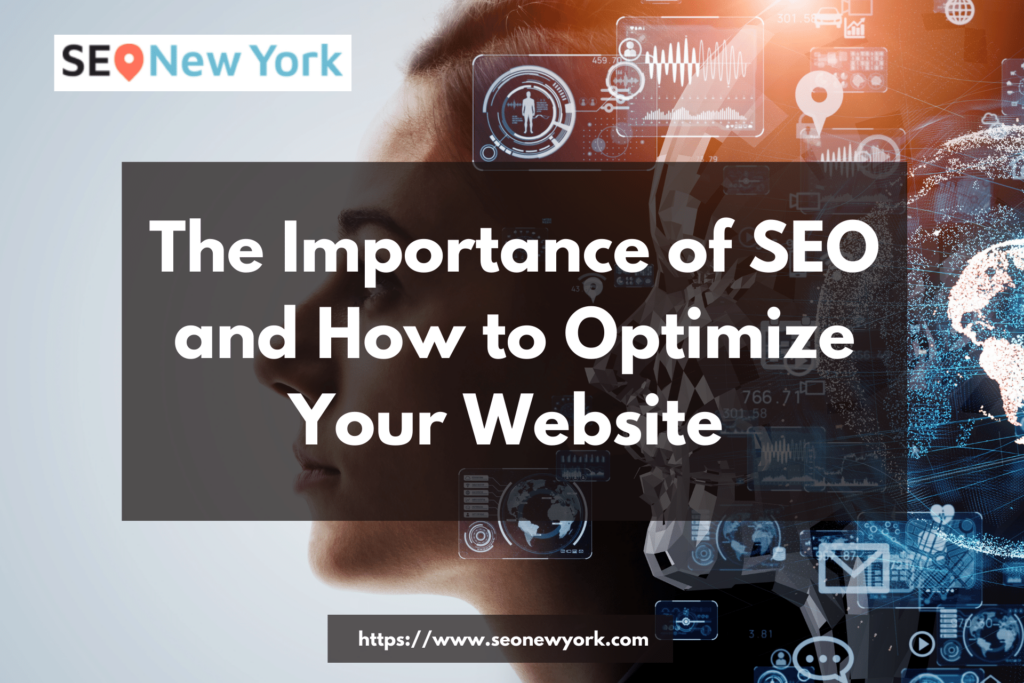Search engine optimization, more commonly known as SEO, is the practice of optimizing a website for Google search with the goal of earning higher web traffic levels and improving the visibility of the site. Many small business owners have heard of SEO but don’t fully understand its purpose or why SEO is important and how to go about implementing it. This blog post will introduce you to SEO and explain some basic tips on how to optimize your website.
Why SEO is Important?
There are two primary types of traffic that can come to your website: direct traffic and organic traffic. Direct traffic is when someone types in your URL into their browser or clicks on a link from an email signature. organic traffic, on the other hand, is when someone finds your website through a search engine like Google. Small businesses should focus on organic traffic because it is essentially free marketing; once your website is ranking high on Google, you will continue to receive organic traffic without having to pay for ads. The main aim of SEO is to improve your website’s visibility and ranking on search engines like Google so you can earn more organic traffic. It’s important to note that SEO takes time – it’s not a quick fix solution. However, it is worth investing time in because the long-term benefits outweigh the short-term costs.
SEO Basics: How to Optimize Your Website
Title Tags
The title tags on your website should include your target keywords and be descriptive and concise – aim for around 50-60 characters.
Meta Descriptions
Your meta descriptions are the brief descriptions that appear below your title tag in the search results. Like your title tags, they should be descriptive, and concise, and include your target keywords. Aim for around 155-160 characters.
Header Tags
Header tags are used to break up your content into sections; they range from H1 (the largest) to H6 (the smallest). You should use header tags throughout your blog post or article, with one H1 tag at the beginning of the piece (this will be your title) and then H2, H3, etc., tags throughout the rest of the content to break it up into sections.
Alt Tags
Alt tags are text descriptions of images; they help Google “read” images so they can appear in image search results. Whenever you upload an image onto your website, make sure to include an alt tag that accurately describes what is happening in the image and includes relevant keywords.
Internal Links
Internal links are hyperlinks that lead from one page on your website to another page on your website; they help search engines crawl through your site by establishing a relationship between pages. For example, if you have a blog post about 10 tips for living a healthy lifestyle and you want people who read that blog post to also read your blog post about 5 healthy recipes, you would include an internal link leading from the “10 tips” blog post to the “5 healthy recipes” blog post within the body of the first blog post. You should try to include 1-2 internal links per blog post or article you write.
Keywords
As we mentioned earlier, keywords are words or phrases that people use when searching for something online; they can be single words (e.g., “coffee”) or multi-word phrases (e.g., “best coffee beans”). You should try to include 1-2 keywords per blog post or article you write; too many keywords will overwhelm readers and make your content difficult to read, while too few keywords will make it difficult for Google (and other search engines) to index your content properly. In general, aim for a keyword density of around 1%. This means that if you have a 100-word blog post, you should aim to use your keyword(s) around 1 time (i.e., 1% of 100 words).
Conclusion
SEO is important for small businesses because it helps improve visibility and organic traffic levels at a relatively low cost compared to other marketing methods such as paid ads. While SEO takes time to implement effectively, its long-term benefits outweigh any short-term costs associated with its implementation process. To get started with SEO basics, small business owners should focus on optimizing their title tags, meta descriptions, header tags, alt tags, internal links, and keywords throughout their website’s content following best practices guidelines.
